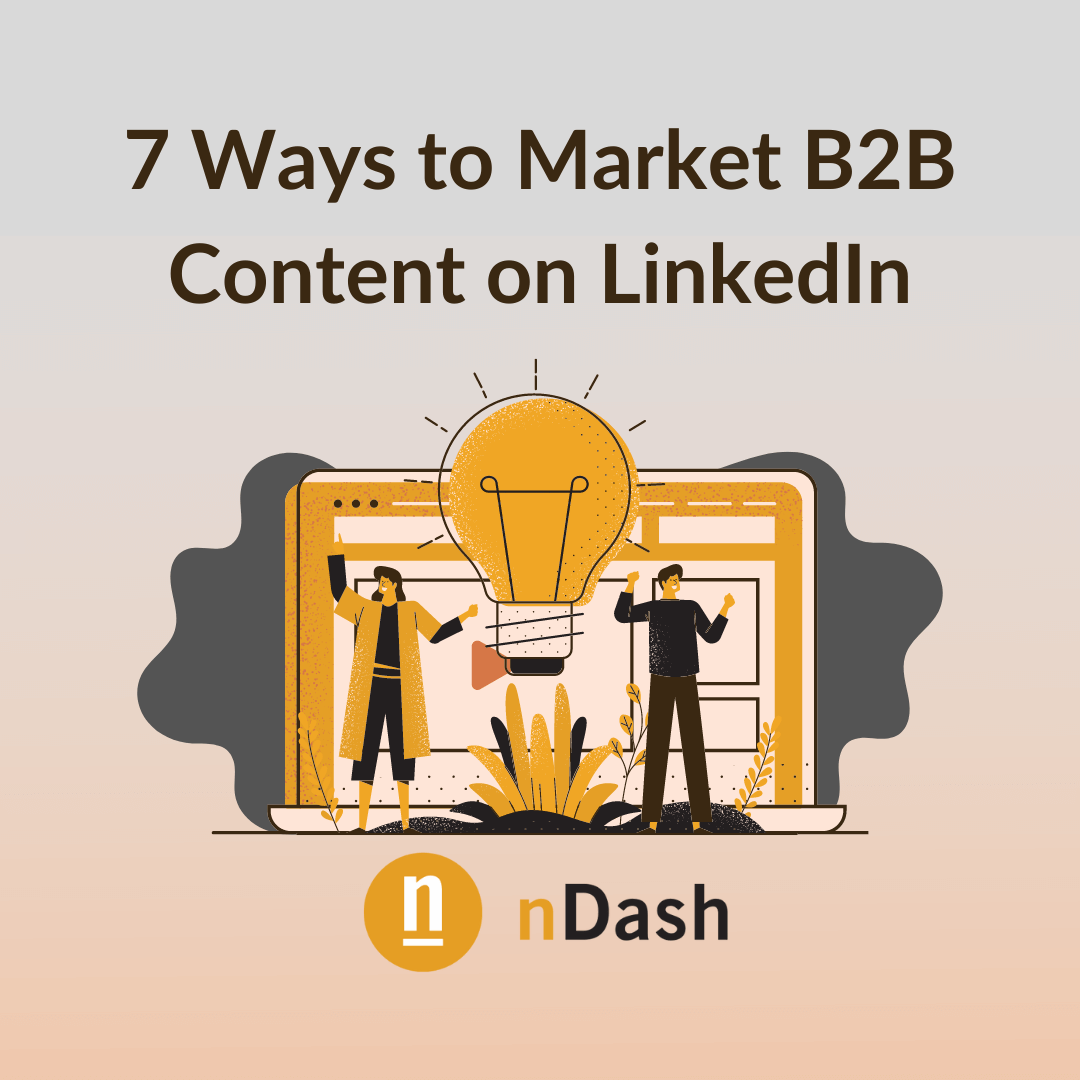Content creation is quickly replacing the value of ad marketing, and it has everything to do with the shopping savvy of consumers today. They’re not looking to be marketed to – what they want is valuable content that’ll help them make their own purchasing decisions. In other words, they want high-quality content that gives them the information they need to solve their problems. This is exactly where your B2B content marketing strategy should be today.
But what’s the best platform for reaching your target audience?
If you ask most B2B marketers, they’ll tell you LinkedIn is the place to be. If you’re not already publishing content on LinkedIn Pulse, then this will surely change your mind.
What’s So Great About LinkedIn Pulse Anyway?
Do you mean, besides the fact that there are 260 million active monthly users? Well, there’s plenty for LinkedIn to gloat about.
For instance, 61 million of the users are senior-level influencers, and 40 million are in decision-making positions. Then it’s also the most-used social platform by Fortune 500 companies. Not to mention, 41% of millionaires are using LinkedIn.
But what if you want to target millennial business owners?
Well, there are 87 million millennials on LinkedIn, and 11 million of them are in decision-making positions. And if you’re wondering how well B2B content converts on here, then you’ll be happy to learn that LinkedIn generates 3x more conversions than Facebook and Twitter.
It’s no wonder 71% of B2B marketers use LinkedIn for social media marketing.
But let’s stop with the stats and look for some substance. Here are some of the B2B brands paving the way for high-converting content on LinkedIn Pulse.
Microsoft: Using “Showcase Pages” for Niche Brands
Now, if you’re worried that LinkedIn isn’t the place to be for tech companies, think again. Microsoft has proven the value of content marketing on this platform.
Their strategy consisted of giving readers behind-the-scenes insights, marketing tips, and company stories. The brand now has 3.5 million followers, which whom Bill Gates shares his wisdom with.
But this isn’t all Microsoft did – they also were one of the first to use LinkedIn’s Showcase Pages. This allows companies to create sub-pages for their main profile to hone in on niche communities (definitely something you want to be using!).
GE: Using Images & Questions to Engage
By now, we all know the importance of visuals inside content. In fact, content with images gets 650% more engagement, and videos attract 3x more links than text-only.
So it makes sense that General Electric decided to focus on visual content, such as infographics and videos. They are known for creating original graphics with inspiring quotes, data/stats, and engaging questions.
One they created had an image of Mars with holographic people walking around, and it asked, “What if we could explore Mars as holograms?”
Not surprisingly, it generated a lot of likes and comments.
Adobe: Publishing Insightful B2B Content
Remember, online users are looking for great content and information. And that’s exactly what Adobe accomplishes with its content marketing strategy.
The brand focuses on creating visual content that showcases insights, tips, news, and behind-the-scenes access to company culture. Its goal is to build brand awareness and creatively promote its products.
These are just some of the brands excelling in LinkedIn B2B marketing. Next, let’s take a look at some of the ways you can turn your LinkedIn campaign into a success.
1. Offer B2B Content Featuring Tips & Advice
A lot of the people on LinkedIn are looking for help with career or business development. You’ll find that the posts that received 60,000+ shares were those that contained the word “success” or “successful.”
Take a look at the snapshot from BuzzSumo:
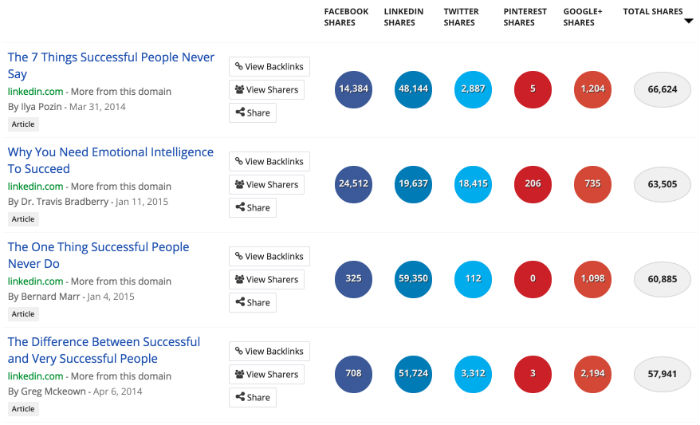
If you’re able to create content that’s insightful and valuable to your B2B audience, then chances are they’re going to read and share your posts.
For instance, if you can create posts about how to succeed in growing leads, conversions, and traffic, then you could earn yourself more user engagement.
2. Keep Your Titles Short & Posts Long
Now, when it comes to the length of your titles and content, you want to follow two golden rules. For titles, it’s all about keeping them between 40 to 49 characters.
As you’ll see in this image, these are the posts that get the most views.

As you should know, your headline is what will capture the attention of your audience. So it’s not something you want to throw together quickly.
Also, it seems that question posts don’t perform as well on LinkedIn as it does on Google and other social media platforms.

However, how-to posts perform very well on LinkedIn.

But when it comes to your content, you should focus on long-form posts. Long gone are the days of you getting away with publishing 300-word posts.
The aim now across all platforms is 1,600-word blog posts. However, for LinkedIn, you should aim for an average of 2,000 to 2,500 words.
Take a look at this BuzzSumo infographic to get an idea of how well different word lengths perform on LinkedIn Pulse:
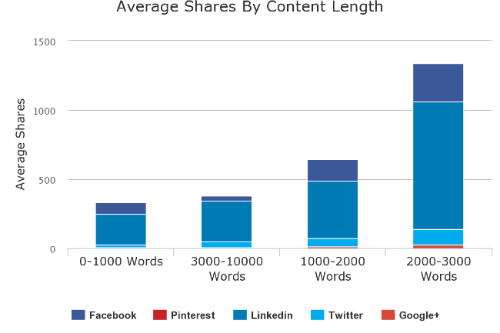
As you can see, content between 2,000 and 3,000 words performs the best. Yet, content above 3,000 words doesn’t do so well. And it’s the same for content under 1,000 words.
3. Create B2B Content that’s Visually Appealing
Now, there are two ways you can make your content visually appealing – with images and with skimmable content.
It’s good to do a combination of both whenever you can. Why is this so important? Because most internet users only read 20% of the content below the fold.
And for this reason, you should make your content easy to skim by making your paragraphs shorter (1-3 sentences) and breaking up the content into H2 and H3 subheadings.
Here’s an infographic showing that content with 5 subheadings performs the best:
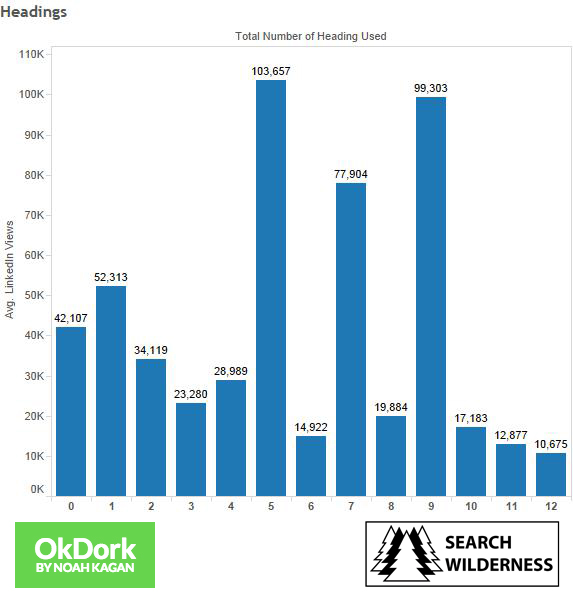
But let’s not forget about images. Articles that contain visuals get 94% more views.
And on LinkedIn, you perform best when you have 8 images in your posts. These receive the most views, comments, shares, and likes.
Take a look for yourself:

But don’t stress if you don’t have that many visuals to share. As you can see in the infographic, any number of images is better than none!
4. Avoid Using Videos & Multimedia
Here’s a knee-jerker for all you marketers who focus heavily on embedding videos and other multimedia into blog posts.
And while adding them won’t completely kill your campaign, it could prevent you from reaching your max potential on LinkedIn.
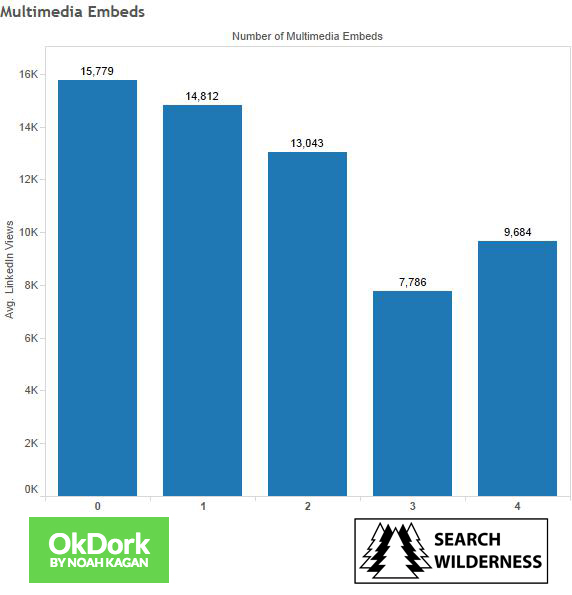
If anything, focus on using fewer videos per post. As we mentioned earlier, GE has a great campaign going on LinkedIn using mainly video content. So definitely test out different content types to see what works for your audience.
5. Publish B2B Content Earlier in the Week
When it comes to targeting a B2B audience, it’s critical to time your interactions accordingly. It appears that on LinkedIn, businesses don’t really engage on Fridays. Yet, on weekends they engage a lot more.
Of course, most engagement happens on Mondays, followed closely by Tuesdays. Check out this infographic from BuzzSumo:

6. Create More List Posts
List posts do well across all platforms, which is why it’s a great technique for social media marketing.
If you’re wondering how to get more views using your headline, then this is one way to do it.
When you compare how-tos, why posts, and what posts, list posts come out on top. Here’s a look at an infographic from BuzzSumo:
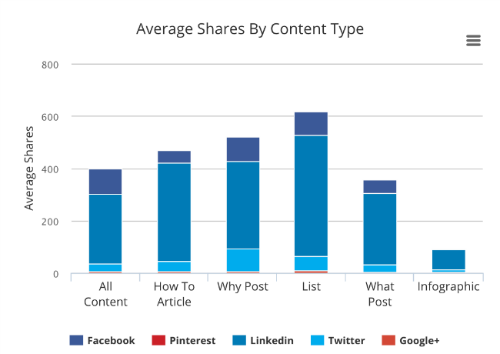
And there’s a stat floating around that odd-numbered lists outperform even numbers. Here’s another infographic showing how list posts perform against non-list posts:
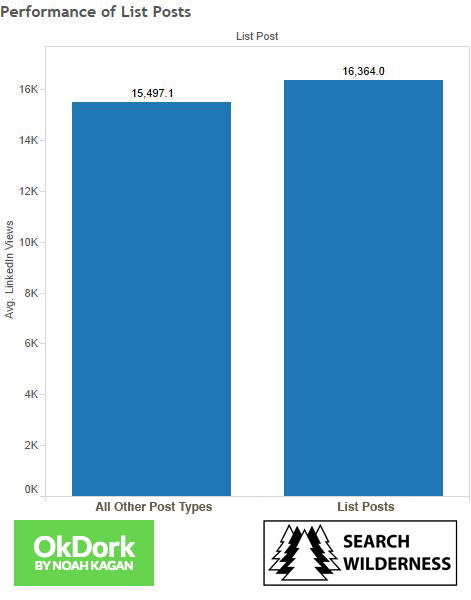
But if you want to mix it up every now and then, then you should focus on headlines that begin with “How to” and “Why.”
For example, here are three ways you can write the same headline:
“How to Get More Leads to Your B2B Business”
“5 Ways to Grow Your B2B Leads”
“Why these Tips Work for Growing B2B Leads”
Besides, it’s always a good idea to do a lot of testing in your content creation strategy to see what works best for your brand and audience.
7. Keep Your B2B Content at a 5th Grade Reading Level
The idea of “dumbing” down your content may seem counter-intuitive for B2B marketing, but as always, there are stats to prove otherwise.
But before we get into that, it’s important to note that not all business owners are college grads. Also, most people, regardless of education level, prefer to read content that’s easy to digest.
The average adult reads at a 7th- to 8th-grade reading level. By making your content simple enough for an 11-year-old, you’ll know it’s easily digested by anyone who reads it. And the more people you can reach, then the higher your potential for conversions.
Building a B2B Content Marketing Strategy for LinkedIn Pulse
There are roughly 130K pieces of content published on LinkedIn each week. This means you need a strategy that will help your content rise above all the noise.
But rather than working harder (publishing more content), it’s best to work smarter. With the above tips, you can create headlines that are compelling, content that’s engaging, and publish at the times your audience will most likely engage with your posts.
All you have to do now is develop your content marketing strategy and put it into action!

Editor’s note: This post was written by nDash community member Saphia Lanier. Saphia writes a variety of business articles and website copy on topics such as B2B marketing, digital marketing, content marketing, and more. To learn more about Saphia or to have her write for your brand, sign up for nDash today!
